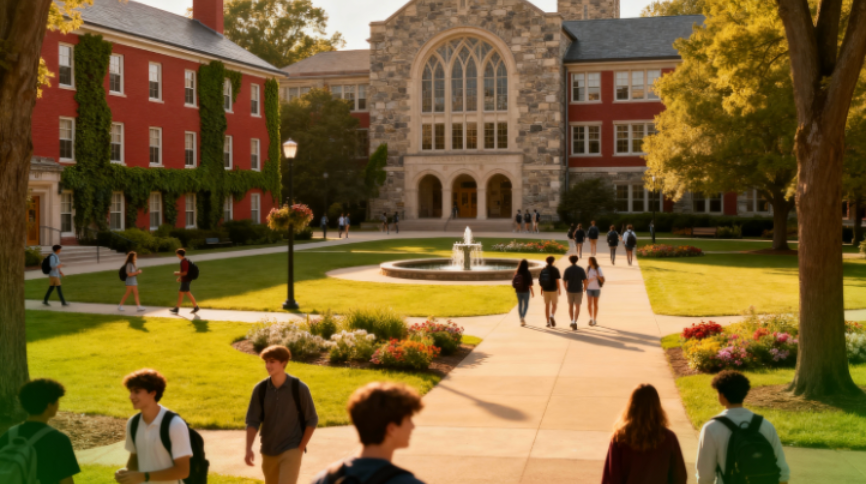In the fast-moving world of education, student needs, classroom climate, facility operations, and campus services are always evolving. Traditional semester-end course evaluations only scratch the surface—and often arrive too late to truly make a difference. What if schools could listen, respond, and adapt in real time? That’s where FeedbackNow offers a powerful advantage.
The Case for Real-Time Feedback in Education
Feedback is not just a courtesy- it’s a proven lever for improvement. Educational research underscores that continuous feedback loops—not just summative ones—support deeper learning and higher student satisfaction. Harvard Business School
Meanwhile, institutions increasingly recognize that student experience touches more than just academics. Campus amenities, safety, dining, facilities, and administrative services also shape retention, reputation, and campus culture. As Watermark Insights points out, “student feedback can uncover individuals or groups … who are struggling … and surface pain points in curriculum and campus environment”—serving as an early warning system for emerging problems. Watermark Insights
In short: campuses that embed listening are better equipped to adapt, improve, and support student success.
What FeedbackNow Brings to Campus
FeedbackNow is designed to capture sentiment “in the moment” via physical and digital touchpoints, translate signals into alerts and insights, and help administrators turn feedback into action. Here are areas on campus where it shines:
1. Classroom & Instructional Experience
- Place feedback kiosks or tablet stations inside lecture halls, tutorial rooms, or labs so students can react immediately to how a session went (pace, clarity, engagement, technical issues).
- Use QR codes or embedded survey buttons in learning portals or LMS systems for after-class check-ins.
- Trigger alerts when feedback dips — for example, if many students report confusion or disengagement, instructors or academic support personnel can step in quickly.
This helps convert passive end-of-term evaluations into proactive course tuning. In other words: catch misunderstandings early, rather than months later.
2. Facilities, Maintenance & Campus Environment
- Situate feedback devices in restrooms, study lounges, cafeterias, dorm common areas, or near elevators.
- Students or staff can instantly flag problems like lighting failures, cleanliness, heating/cooling issues, or general dissatisfaction.
- Automated alerts route issues to facilities or building management teams—closing the loop faster and minimizing downtime.
3. Dining & Food Services
- Install feedback stations at dining hall exits or ordering kiosks.
- Immediate signals about food quality, wait times, seating comfort, or menu variety can help dining services react mid-shift and course-correct.
4. Student Life, Safety & Support Services
- Feedback points in student union buildings, counseling centers, recreation facilities, or security checkpoints allow students to flag concerns or satisfaction with those services.
- For periods of high stress (midterms, finals), dynamic feedback can help administration monitor well-being, stress, and resource needs.
Advantages & Outcomes for Schools
By embedding FeedbackNow into campus life, institutions can realize multiple benefits:
- Faster problem resolution
Issues flagged in real time are less likely to escalate. Facilities, dining, or academic staff can respond proactively. - Better alignment of resources
Leadership can see which buildings, services, or times of day generate the most negative feedback—and allocate effort accordingly. - Enhanced student engagement & trust
When students see their feedback leads to visible change, their sense of agency, belonging, and satisfaction tends to increase. - Data-driven decision making
Trends over time, by building, by service type, or by time of day can reveal systemic issues (e.g. peak hour dining complaints, recurring HVAC problems in certain halls). - Stronger retention & institutional reputation
Happy students are more likely to persist, recommend the campus, or engage as alumni.
Tips for Success in Deploying FeedbackNow on Campus
- Choose high-traffic, relevant locations — Think lecture halls, cafeteria exits, residence hall lobbies, administrative offices.
- Set meaningful thresholds & alerts — Decide what level of negative sentiment triggers action and who gets notified.
- Ensure anonymity & psychological safety — Students are more honest when they trust that feedback is anonymous and won’t be penalized.
- Close the feedback loop visibly — Publicize responses and changes made; this reinforces trust.
- Use trend analysis rather than isolated data — One negative reaction is less meaningful than a growing trend in a particular area.
- Integrate with existing systems — If you have facility management software, LMS, or CRM systems, feed data in to enrich cross-functional views.
When schools listen continuously, they lead continuously. By using FeedbackNow to collect, analyze, and act on real-time feedback, campuses create a living dialogue between students, staff, and leadership—one that fuels better decisions, stronger community trust, and a more responsive, vibrant learning environment. In short, FeedbackNow helps every voice on campus be heard—and every moment turned into an opportunity to improve.
Contact us to learn more about how FeedbackNow can help improve your customer experience and operations!





